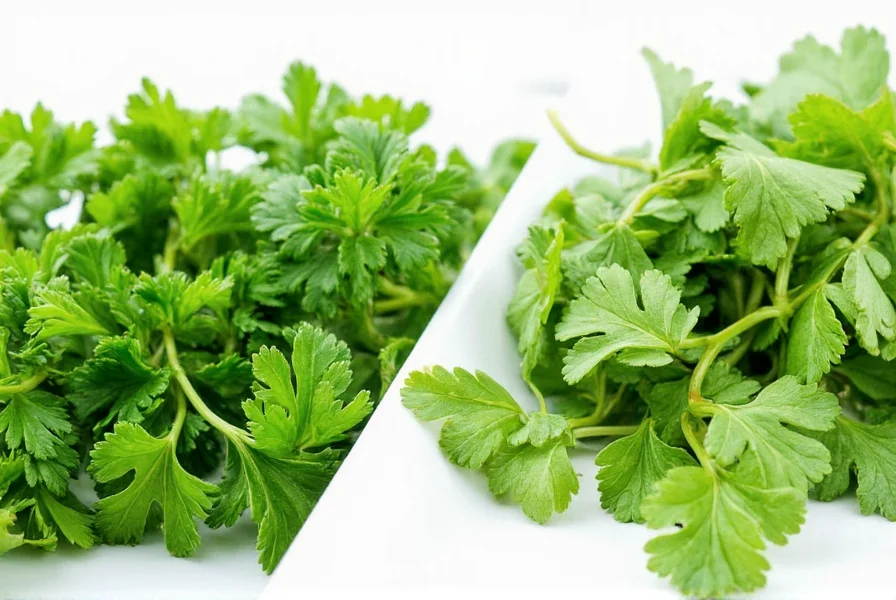Parsley vs. Cilantro: Which Green Herb Steals the Show in Your Kitchen?
If you’ve ever stood in your local grocery store squinting at the fresh herb section, wondering if that’s parsley or cilantro (or maybe just a bunch of weeds), you’re not alone. These two green herbs often look alike but bring completely different flavors to the table.
Table of Contents
- What's the Difference Between Parsley and Cilantro?
- Flavor Profiles: Earthy vs. Citrusy
- Culinary Uses: When to Use Which?
- Growing at Home: Tips for Herbs Enthusiasts
- Buying Guide: How to Choose Fresh Parsley & Cilantro
- Preservation Tips: Make Them Last Longer
- Fun Facts About Parsley and Cilantro
- Conclusion: The Winner? It Depends on the Dish!
What's the Difference Between Parsley and Cilantro?
Let’s start with the basics: both parsley and cilantro are fresh herbs, but they come from different plant families and offer distinct tastes, aromas, and textures.
| Feature | Parsley | Cilantro |
|---|---|---|
| Scientific Name | Petroselinum crispum | Coriandrum sativum |
| Leaf Shape | Flat or curly, firm texture | Delicate, lacy leaves with a softer feel |
| Smell | Mildly herbal, earthy scent | Strong, citrusy aroma (some find it soapy) |
| Taste | Grassy, slightly peppery | Refreshing, lemony, sometimes polarizing |
| Cooking Role | Garnish or supporting actor | Star ingredient or bold finisher |
Flavor Profiles: Earthy vs. Citrusy
When it comes to flavor, parsley plays it safe. Think of it as the quiet but reliable friend in your spice drawer. Its mild taste makes it perfect for adding subtle freshness without overpowering a dish.
Cilantro, on the other hand, is like the outspoken guest who walks into the party and immediately changes the vibe. It has a bright, almost citrus-like flavor that can divide opinions — some love it, others swear it tastes like soap.
This difference in perception comes down to genetics. A specific gene called OR6A2 is responsible for how we perceive aldehydes in cilantro — compounds also found in soap. If you have the gene, cilantro might just make your day. If not… well, better stick with parsley.
Culinary Uses: When to Use Which?
Knowing when to use parsley or cilantro can elevate your cooking game. Here’s a handy guide:
- Parsley Shines In:
- Tabbouleh (Middle Eastern salad)
- Pesto sauces (especially with mint or basil)
- Garnishing soups, stews, or roasted meats
- Herb butter or chimichurri sauce
- Cilantro Stars In:
- Salsas, guacamole, and ceviche
- Curry pastes and Thai dishes
- Mexican tacos, burritos, or quesadillas
- Vietnamese pho garnish
Pro Tip:
Add cilantro at the end of cooking to preserve its vibrant flavor. Parsley can handle more heat, so toss it in during the last few minutes or use it raw for a fresher kick.
Growing at Home: Tips for Herbs Enthusiasts
Both herbs can thrive in home gardens or pots, but there are a few key differences to keep in mind:
Parsley Growing Tips
- Thrives in full sun to partial shade
- Well-drained soil is essential
- Slow germination — start seeds indoors
- Biennial plant, best harvested in second year
Cilantro Growing Tips
- Likes cooler temperatures; bolts quickly in heat
- Can be sown directly outdoors
- Harvest early before flowering for best flavor
- Great companion plant for tomatoes or peppers
Buying Guide: How to Choose Fresh Parsley & Cilantro
Finding quality parsley and cilantro at the market isn’t hard — if you know what to look for. Here’s how to pick the best bunches every time.
For Both Herbs:
- Bright green color: Avoid yellowing or wilted leaves
- Firm stems: Slimy or limp stems mean old produce
- No flowers: Once plants flower, flavor diminishes
Parsley Specifics:
- Curly vs. flat-leaf — both are good, but flat-leaf (Italian parsley) is more flavorful
- Thicker stems hold up better in cooking
Cilantro Specifics:
- Look for small, unopened leaf clusters
- Avoid tall, leggy stalks — sign of bolting
Preservation Tips: Make Them Last Longer
Want your parsley and cilantro to stay fresh for days instead of hours? Try these preservation hacks:
- Water Jar Method: Trim the ends and place in a glass with an inch of water. Cover loosely with a plastic bag and refrigerate.
- Freezing: Chop finely, mix with olive oil in ice cube trays, and freeze for future sautéing or baking.
- Drying: While not ideal for cilantro, parsley can be air-dried or oven-dried for long-term storage (though flavor will mellow).
- Herb Butter: Blend chopped herbs with softened butter, roll into a log, wrap in parchment paper, and freeze for quick flavor boosts.
Fun Facts About Parsley and Cilantro
Here are some interesting tidbits about these two popular herbs:
- In ancient Greece, parsley was associated with death and victory — used to crown winners and decorate tombs.
- Cilantro has been found in Egyptian tombs dating back thousands of years — believed to have medicinal properties.
- The word "coriander" refers to the whole plant, while "cilantro" typically refers to the leaves in American English.
- Parsley is rich in vitamin K, vitamin C, and antioxidants.
- Some studies suggest cilantro may help reduce heavy metal buildup in the body — though more research is needed.

Conclusion: The Winner? It Depends on the Dish!
So, who wins in the parsley vs. cilantro face-off? Well, it really depends on what you're making. Parsley brings balance and brightness without drama, while cilantro adds boldness and personality — sometimes controversial, always memorable.
Next time you’re planning a meal, ask yourself: does this dish need a quiet background singer (parsley) or a show-stopping soloist (cilantro)? Either way, both herbs deserve a spot in your kitchen — just don’t confuse them in your salsa!










 浙公网安备
33010002000092号
浙公网安备
33010002000092号 浙B2-20120091-4
浙B2-20120091-4